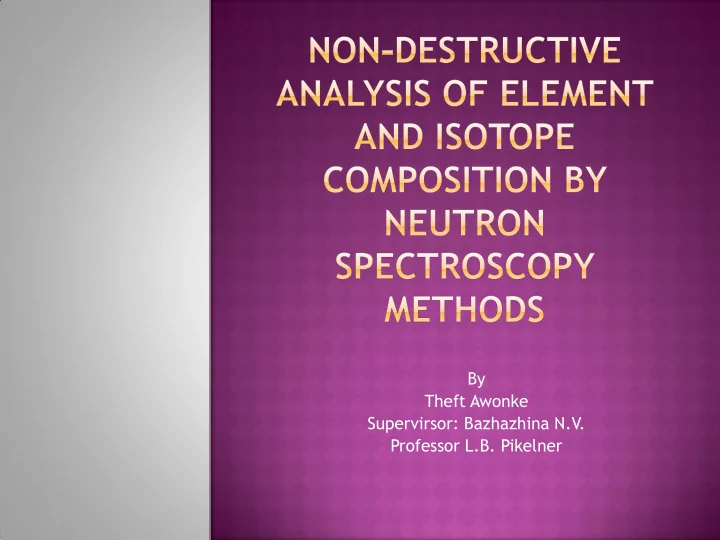

By Theft Awonke Supervirsor: Bazhazhina N.V. Professor L.B. Pikelner
The neutron is a subatomic particle that has the symbol n no net electric charge and a mass slightly larger than that of a proton. With the exception of hydrogen-1, nuclei of atoms consist of protons and neutrons, which are therefore collectively referred to as nucleons. Neutrons are necessary within an atomic nucleus, as they bind with protons via the nuclear force ; protons are unable to bind with each other because their mutual electromagnetic repulsion is stronger than the attraction of the nuclear force. The number of neutrons determines the isotope of an element.
The neutron has been the key to nuclear power production. The neutron was discovered in 1932, and in 1933, it was realized that it might mediate a nuclear chain reaction . In the 1930s, neutrons were used to produce many different types of nuclear transmutations.
Mass Spin Charge Electric dipole moment Magnetic dipole moment Neutron mean lifetime
The neutron is complicated enough to be interesting, but is simple enough to be understandable Neutron spectroscopy is a part of neutron physics studying energy dependence of effective cross sections of different neutron nuclear interactions and formed nuclei excited state characteristics.
The element composition of our sample contained isotopes of Zinc and Copper . Zn 67 isotope was found to be the most abundant The sample was identified to be brass Neutron spectroscopy is a useful and important method of identifying isotope composition of samples.
First and foremost I wish to thank God almighty, the giver of life, for blessing me with the opportunity. I would also like to express my appreciation to my supervisor and co-supervisors :Professor L.B. Pikelner, P .V. Sedyshev, V.N, Bazhazhina I would also like to extend a hand of gratitude to NRF , DST , and JINR for the financial support and granting me this once in a lifetime opportunity.
Recommend
More recommend